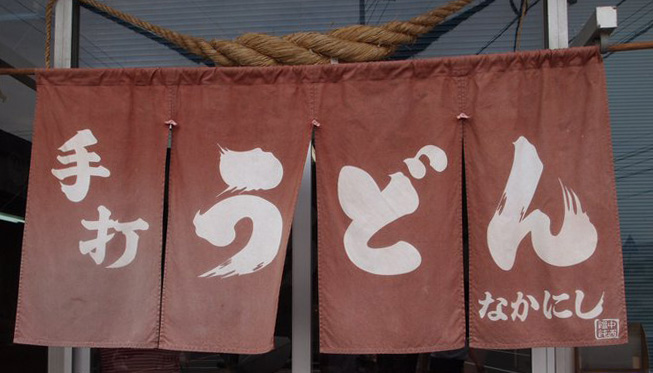64. The "Hand" Radical: 手 and 扌
Hands enable us to take action. In order to be active, you also need to involve your head and maybe your feet, but hands seem to be the real engines behind a lot of behavior. This becomes clear when one examines the "hand" radical.
The Parent and Variant of the "Hand" Radical
Both the nomenclature and the shapes are quite straightforward when it comes to this radical. The parent is 手 (usually known as て), and the variant is 扌 (known as てへん when it's on the left, which is where you'll always find it). If you like, you can call this variant simply て.
By the way, according to Henshall, the four-stroke 手 is the pictograph of a "hand, palm, and wrist." There are supposedly five fingers represented, but one is bent, he says. So what has happened to the fourth finger with the three-stroke 扌? Has a finger fallen off?!
Photo Credit: Eve Kushner
A monkey raises a hand for applause after performing each trick at a monkey show on the island of Shodoshima.
The Parent 手 Takes Center Stage
When the 手 shape appears inside a kanji and serves as the on-duty radical, it always plants itself squarely in the middle of things. It also sits at the bottom of the character. (This in no way matches the location of a hand on a body, obviously!) Check out a few examples:
挙 (458: to nominate, offer; noteworthy act; to raise (one's hand))
承 (713: to agree to; receive)
拳 (2001: fist)
Ooh, we find some look-alikes in this list! I wonder if I'll ever be able to tell 458 from 2001! It's lucky that they have such different meanings. Context should definitely help!
Incidentally, Halpern says that 458 originally meant "to raise (one's hand)." It still has that meaning in 挙手 (きょしゅ: raising one's hand; salute), which gives us a lovely repetition of the 手 shape.
Photo Credit: Eve Kushner
A monkey fist-bump.
Photo Credit: Eve Kushner
Two salutes!
Here are a few more instances of 手 as the on-duty radical:
撃 (1209: to strike (militarily))
掌 (1402: palm of the hand; taking charge)
摩 (1830: to rub against, chafe, scrape, wear away)
As you can see, the 手 hasn't budged.
Photo Credit: Eve Kushner
A Chinese sign in Albany, California, uses a word that means "massage" in both Chinese and Japanese: 按摩 (あんま). In fact, this is a Japanese type of massage. The first kanji is non-Joyo. This word presents us with a great combination of 扌 in the first kanji and 手 in the second.
The Variant 扌 Always Goes on the Left
Meanwhile, as you know, 扌is always on the left, plain and simple. Some examples:
指 (289: finger, to point to, indicate)
技 (644: skill; ability; art, craft)
接 (730: contact; to touch)
With these kanji, you can clearly see a connection to hands.
Photo Credit: Eve Kushner
Outside an Osaka office that gives chiropractic treatments, we find five instances of 扌 in a row! Reading from left to right, we have these words:
脱臼 (だっきゅう: dislocation)捻挫 (ねんざ: sprain)
打撲 (だぼく: blow, beating)
挫傷 (ざしょう: (internal) bruising)
A Handy Radical
In fact, with many of the kanji that have 扌 as the on-duty radical, it's quite clear why a symbol for "hand" would play a role in that character. For instance, hands enable us to play baseball:
投 (357: to throw)
打 (335: to strike, hit)
They enable us to search for things (maybe underground) and to throw away other things:
探 (930: to search for)
掘 (1189: to dig, excavate)
捨 (883: to discard)
With our hands, we can make things smaller (by folding them) or bigger:
折 (522: to break off; fold, bend)
拡 (820: to enlarge; expand)
You get the idea. It's handy to have hands! It enables us to do a great many things in the physical world.

Photo Credit: Atsushi Otsuki
Although 打 (335) means "to hit," as we've seen, it's part of the word 手打ち (てうち), which means "making noodles by hand" (in this case udon). The kneading constitutes hitting, I suppose. In the sign, the okurigana ち has disappeared, as often happens in signs. The smaller hiragana to the right, なかにし, tells us the name of the shop or owner (or both).
How About a Hand with That?
For a moment everything seemed fairly logical, but I can fix that for you! Have you ever noticed a hand in your tea?!
抹茶 (まっちゃ: powdered green tea)
The first kanji, 抹 (1836), means "to rub away, erase; to paint," but it can also mean "powdered," as well as "to turn something into powder" (by grinding, which is kind of like rubbing). Because people make 抹茶 by using their hands (and a mortar) to grind tea leaves into powder, 抹 plays a role in this word.
Photo Credit: Eve Kushner
Green tea ice cream for sale on Sado Island. It was delicious!
How about the hand in this kanji, which wouldn't seem to need hands at all?
推 (908: conjecture, infer, conclude)
According to Henshall, this character combines "hand" and "bird." The part on the right acts phonetically to express "thrust, push," and because birds can only go forward, not backward (something I had never considered!), the right-hand side may convey the sense of "forward motion." Thus, 推 means "to push forward with the hand," which led to the idea of "promote," and then somehow became extended to "infer."
By the way, here's an example that, on first glance, may make you think that it's about handling something concrete—perhaps baggage:
扱 (1000: to handle)
But people use 扱 far more often to mean "handling" a situation a certain way. In English, too, "I'll handle it" tends to mean something abstract, just as "manipulate" started out meaning "to handle skillfully in the hands" and then evolved to have a twisted psychological meaning.
